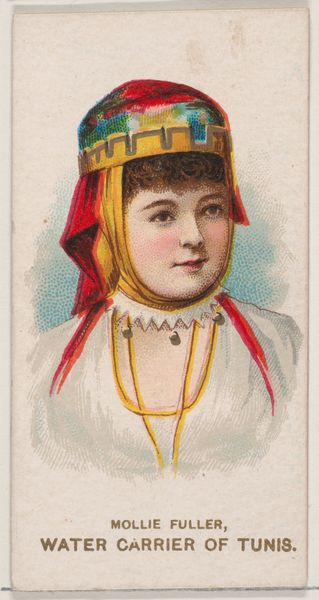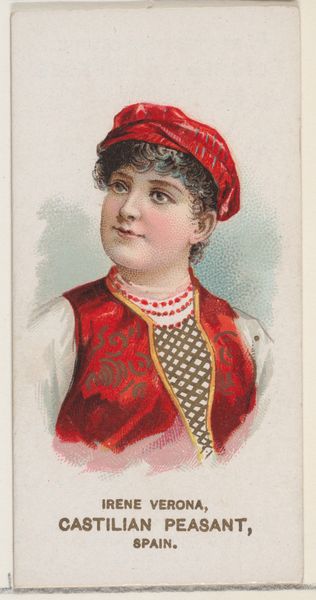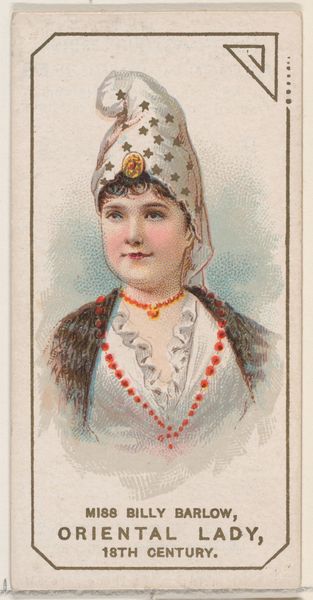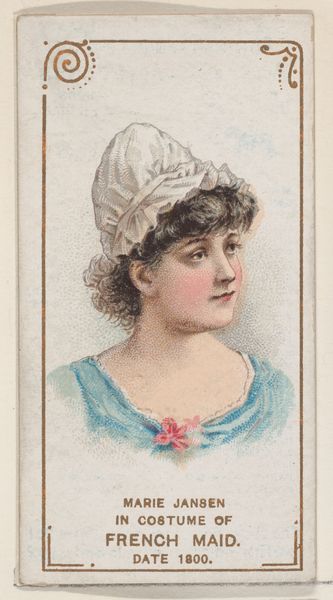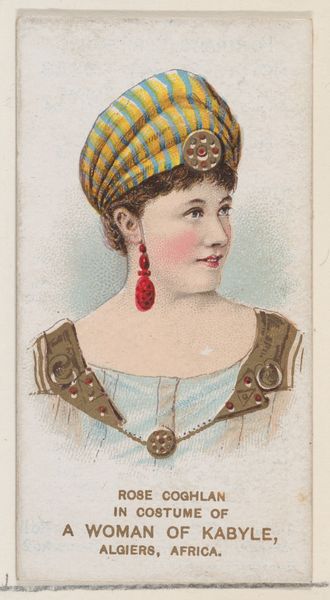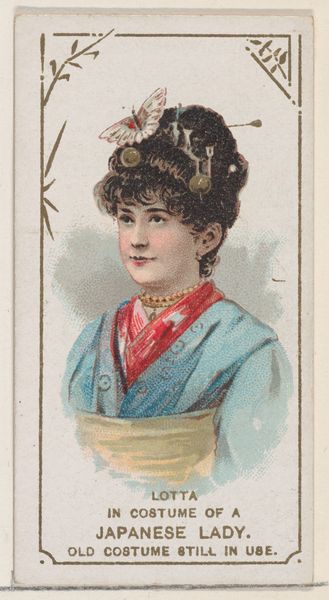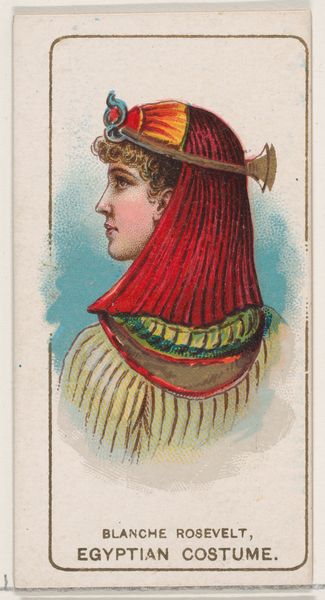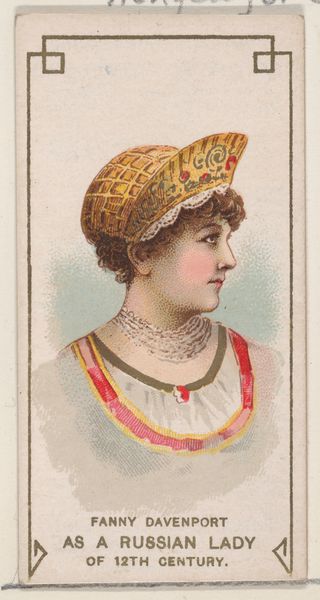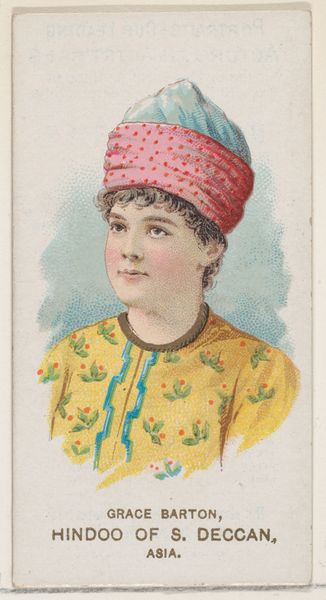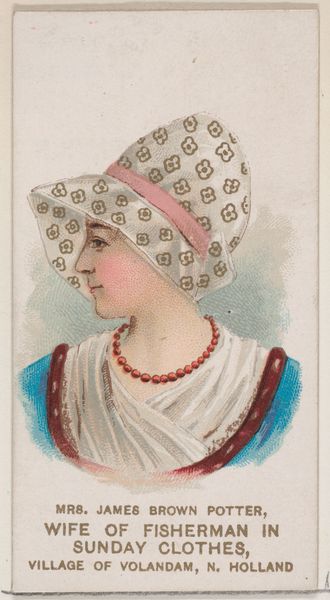
Minnie Conway in Costume of a Polish Lady, from the set Actors and Actresses, First Series (N70) for Duke brand cigarettes 1888 - 1889
0:00
0:00
drawing, print
#
portrait
#
drawing
#
art-nouveau
# print
#
caricature
#
portrait art
Dimensions: Sheet: 2 3/4 x 1 1/2 in. (7 x 3.8 cm)
Copyright: Public Domain
Curator: This small, rather charming print showcases Minnie Conway in the Costume of a Polish Lady. It's part of the "Actors and Actresses" series produced by W. Duke, Sons & Co. around 1888-1889, designed to be included in their Duke brand cigarettes. What's your initial take? Editor: Well, right off the bat, the chromolithography grabs me. It's delicate, almost confectionary with the soft pinks and creams. But also, let’s be honest, it's advertising, and that fundamentally shapes how we view it. Curator: Absolutely. Consider the production line pumping these out; they were inexpensive, disposable. We're talking about a commodity, designed to promote consumption of tobacco products. The card itself, a paper product, became a vehicle to display her image and boost cigarette sales. The choice of this Polish aristocratic costume? Clearly for exotic appeal to drive interest in the product. Editor: And the layers! It’s fascinating to me how social history meets this tangible object. These cards democratized imagery to a degree. Suddenly, average consumers had access to miniature portraits. Curator: They did, but with a clear agenda. Conway, a performer, becomes a promotional tool. Look at the way her image is flattened into something almost iconic. We're not necessarily concerned with her depth as an artist, but with her ability to capture the eye. Editor: I suppose, but I'm also intrigued by how these "disposable" items ended up being collected and preserved, shifting their cultural value over time. These cards reflect a desire for status; people buy the cigarettes hoping to be on par with Minnie in her faux finery. Curator: That’s the magic, isn’t it? A little scrap of cardboard linking commerce, art, and ambition. The artist's skill also lies in crafting an image easily and efficiently reproducible on a mass scale. How many hands touched this piece from concept to print to distribution to collection? An important reminder about the interplay between art, manufacturing and consumption. Editor: For sure. I came to look at a simple portrait, but the more we dig in the more complex stories this object unlocks, a reflection of the desires and mechanics of its age. Curator: Precisely. These little artifacts allow us a richer, far more grounded insight into the broader culture that they came from.
Comments
No comments
Be the first to comment and join the conversation on the ultimate creative platform.
